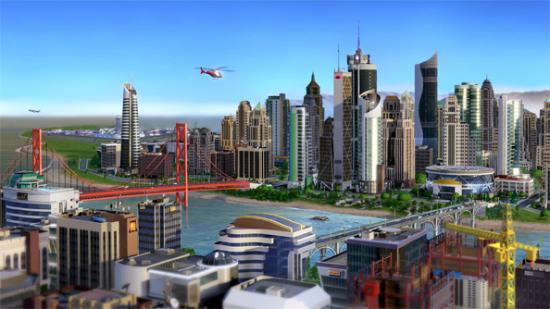SimCity’s March 8th release date is looming. It’s within sniffing distance now. You can hear it on the breeze, you can smell it on the horizon, you can taste it in a third and even more unlikely metaphor. Maxis’s mayoral simulation is almost out, is what I’m trying to get across, so here’s everything you should know about it before it arrives.
The GlassBox engine means it’s actually way cleverer than the old SimCity games
There are no more ‘bad traffic’ animations lazily stamped on busy junctions. Instead, all pedestrians are now individually rendered and their journeys are fully simulated, so you can track a single Sim leaving her home, hopping in her car and driving across town to her workplace. On her travels her car forms a part of a dynamic traffic system that can clog up where routes are badly designed, multiple cars meet and road widths are insufficient. Public transport can alleviate traffic problems by cramming multiple Sims into buses and trams. Commercial areas will need fast routes to the industrial zones that provide them with goods, residential zones will need good connections to regional train stations to allow your townsfolk to commute to other cities in the region.
Fire stations don’t just reduce the likelihood of fires within their radius, instead they send out physical trucks who must reach the blaze in time to stop it. Criminals exist in your city, but can only be caught while they’re carrying out crimes. You can zoom into your tiny model city and watch bank heists being carried out. The level of detail in the simulation is far, far greater than in previous SimCity games.
It’s got curvy roads
Not only that, but if you’re the sort of player who wants to squeeze every last square inch of space out of the gaps between roads, there’s a really clever guideline that you can snap to when drawing out your avenues and streets. This dynamic guideline will snake alongside existing curvy roads, showing you exactly where to place paths so that the zones in between can grow to full size. Zone density is no longer decided when placing zones either, instead it’s dictated by the density of the adjoining road or avenue. Roads can be upgraded too, allowing low density areas to evolve into high density areas, as long as you’re suitably monied.
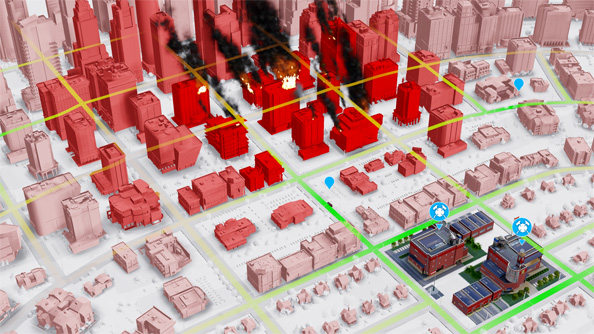
SimCity’s cities are tiny
You’ll butt up against the city limits less than an hour after placing your first avenue. This creates some interesting challenges later in your city’s life however, as you decide which neighbourhoods to bulldoze in the name of progress, and attempt to squeeze giant landmarks and commercial headquarters into the few scraps of land you’ve got left. The scarcity of space also creates interesting challenges on some of the more mountainous terrains (terraforming isn’t a feature in this SimCity). It would’ve been nice to have the option to build much, much larger and more self-reliant cities though. And by “would’ve been nice” I mean “it’s a little ridiculous, please fix this in an update”.
Tiny cities sort ofwork because you can control up to 16 cities in one region
Regions are like multiplayer lobbies, giant expanses of geography with pre-defined slots in which a party of players (or just one player) may begin constructing cities. Cities within a region share resources and materials, and their populations (assuming there are sufficient transport links) can commute from one to another. This means that you can build a thunderous, poison-belching factory city only to draw your workforce from the residential zones of neighbouring towns. Or you can build a tourist trap crammed tight with casinos and shopping centres, sucking cash out of the wallets of holidaying Sims from your friends’ cities. Cash, ambulances, policemen and fire engines can all be shared around a region too, so profits can be turned by buying up all the rubbish of neighbouring cities or renting out your health services to them.
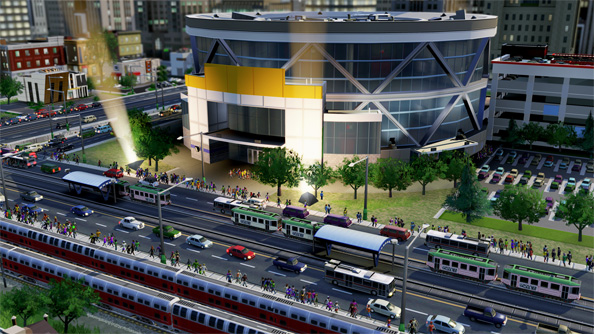
You can specialise in everything (which technically isn’t specialising but shhh)
By focusing on a single industry and leaning on the support of the cities around you to make up for your lack of focus in other areas, you can build specialised cities such as gambling cities, factory cities and education cities. You can choose multiple specialisations or opt to heavily specialise in just one area, and each kind of specialisation brings with it a different kind of challenge. Gambling towns require excellent transport links to pump tourists into and out of your commercial areas as quickly as possible, but they also need a hefty police force to keep crime in check. Specialising unlocks unique buildings too, such as stadia and historical landmarks.
Cities in a region can collaborate on Great Works, which they all share
These massive construction projects require a lot of time, money and materials to construct and are typically only attainable when multiple cities combine their output. The result is either an international airport, a space programme, an Arcology (a recurring building in the series, basically a utopia in a bottle) or a solar farm. Each Great Work spews out rewards: more freight, more education, more population, more power. The Great Works are the closest thing SimCity has to an end game goal, requiring an established and stable infrastructure of raw materials and refineries before you can amass the materials needed to begin work on them. That was a confusing sentence, so…
SimCity is actually a game about crafting
You can find oil in the ground on some plots. Plop an oil well down and you’ll start pumping the stuff out, at which point you can cash out and sell your oil (either regionally or on the global market), or you can refine it. Different refineries turn oil into different things: you can turn it into petrol or into plastics and then sell those on the market instead. Or you can build enough storage to hold on to the materials for construction of a Great Work. You’d be surprised how much plastic you need to get things built.
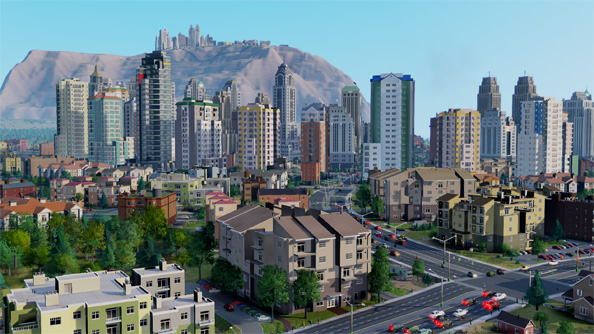
There’s a real, fluctuating global market and it will be fascinating
If you choose to sell your crude oil on the global market, the price you’re offered will be affected by the supply and demand generated by every other SimCity player in the world. Other players will be importing oil to run their power stations (as most city plots lack the stuff) while certain plucky barons will be selling every last drop they can dredge up. It all causes real market wobbles, though Maxis can stimulate the economy by issuing global challenges. Global challenges are of the form: tax one hundred million simoleons out of wealthy sims, carry a million sims on public transport, and so on. There are leaderboards, if you like leaderboards. Do you like leaderboards? Maybe you do.
You’ll need an internet connection
SimCity was built around multiplayer, insists Maxis, so your must maintain a constant connection to the internet to play even when you’re mayoring all by yourself. That connection consistently saves your progress as you go, but also means that during peak times, queues may appear when attempting to join the servers.
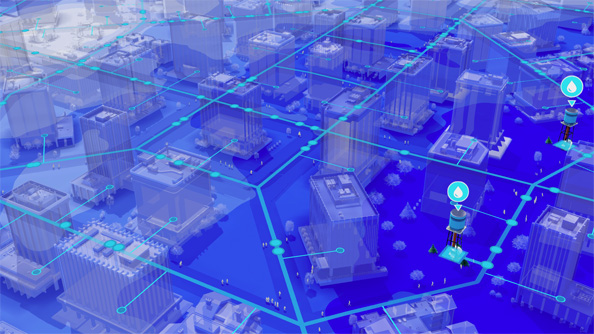
It’s out March 8th, and I think it will be quite good actually
This SimCity isnew and different, more macro in one sense as it simulates cities down to the pinheads in a pinhead factory, yet broader in scopewhen it comes to the interactions between cities. It deserves to be considered on its own merit.SimCity will definitely be fun and beautiful andinteresting, so you should probablypay attention. It’s available to buy at Origin– and a Mac version is on its way soon.
